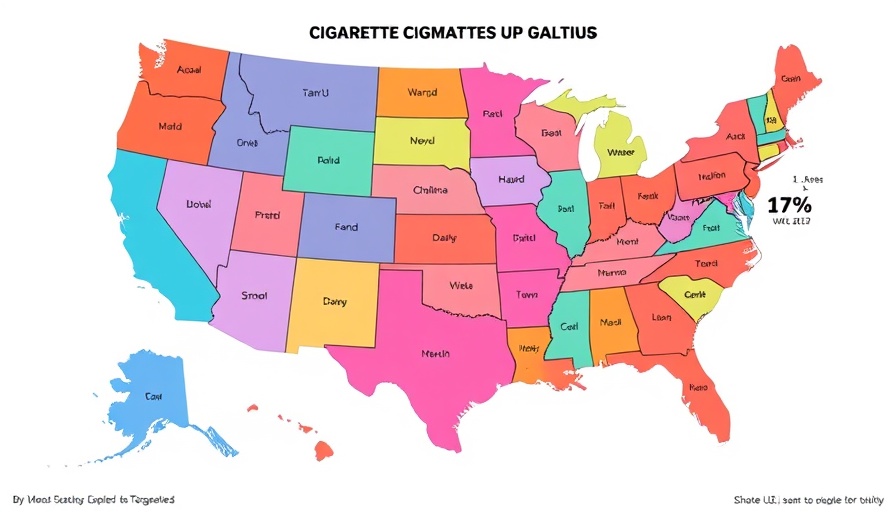
Cigarette Taxes and Smuggling: A Growing Challenge
Cigarette taxes have long been a controversial topic across the United States, but the latest findings indicate a troubling trend: as tax rates rise, so do instances of cigarette smuggling. A recent analysis of 2023 data shows California has overtaken New York as the leader in cigarette smuggling, with a staggering 52.5% of cigarettes consumed in the state reportedly purchased illegally. This shift marks a significant change in the smuggling landscape, underscoring the relationship between taxation and illicit trade.
The Economic Implications of High Tax Rates
Higher cigarette taxes are designed to deter smoking by making tobacco products less accessible; however, they inadvertently encourage smokers to seek cheaper options across borders. For instance, New York follows closely behind California with a smuggling rate of 51.8%. This pattern not only undermines tax revenue for state governments but also contributes to a burgeoning black market, negatively impacting local businesses and communities that comply with regulations.
Border States at the Forefront
States like Wyoming and Virginia demonstrate a different aspect of smuggling dynamics. With outbound smuggling rates reaching 55.0% and 47.9% respectively, these states attract consumers from higher-tax regions looking to evade steep fees. This cross-border shopping phenomenon highlights the complex interplay of state taxes and consumer behavior, raising questions about fairness and the effectiveness of tax policies designed to discourage smoking.
Addressing the Smuggling Issue
To combat cigarette smuggling, experts recommend a balanced approach that includes thoughtful taxation policies alongside enforcement measures against illegal sales. States must recognize the unintended consequences of high taxes and find innovative solutions that maintain public health goals while minimizing illegal trade. As state governments grapple with these issues, the challenge remains: how can they effectively tax tobacco while reducing smuggling rates and promoting legal purchasing?
Understanding the implications of cigarette taxes is crucial for policymakers, businesses, and consumers alike. By addressing smuggling proactively, states can better protect their revenues, promote compliance, and support local communities.
 Add Row
Add Row  Add
Add 

 Add Row
Add Row  Add
Add 



Write A Comment